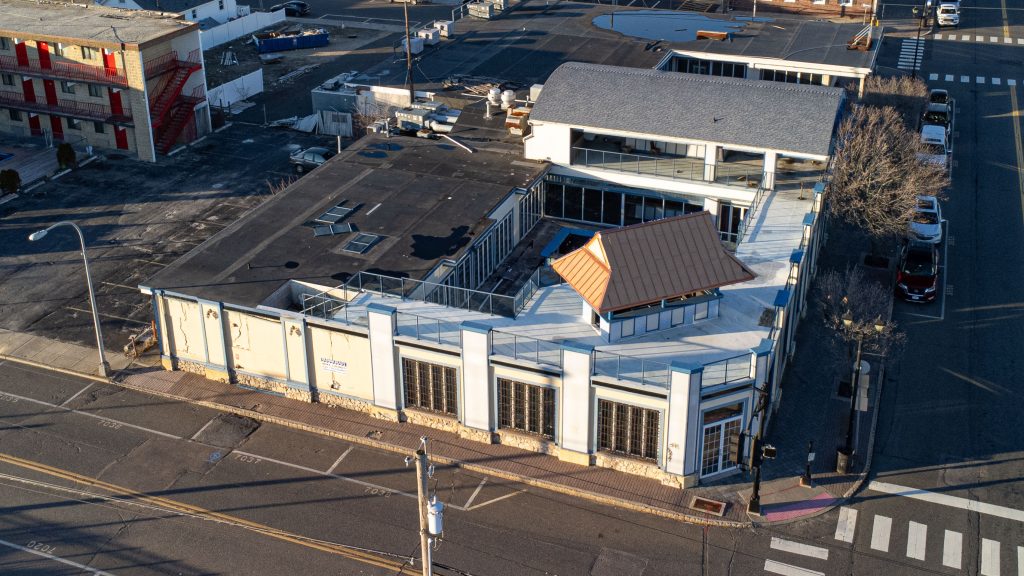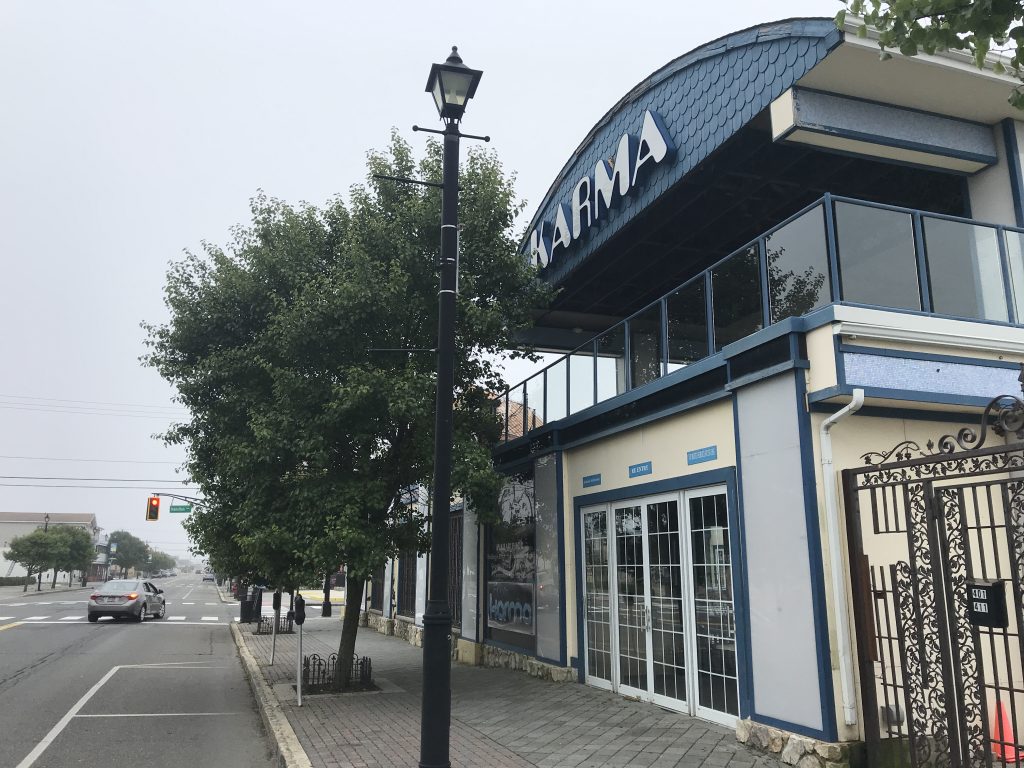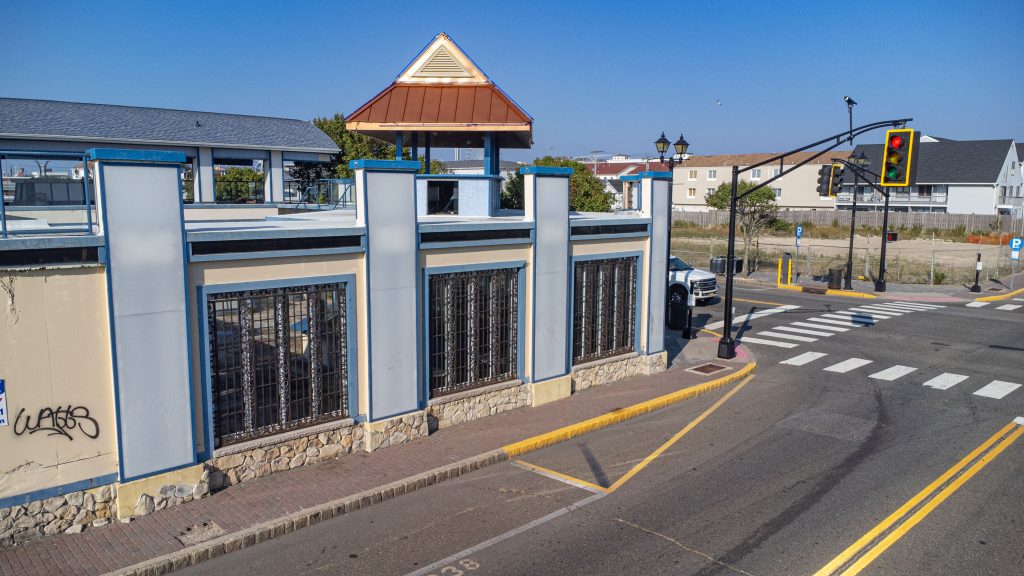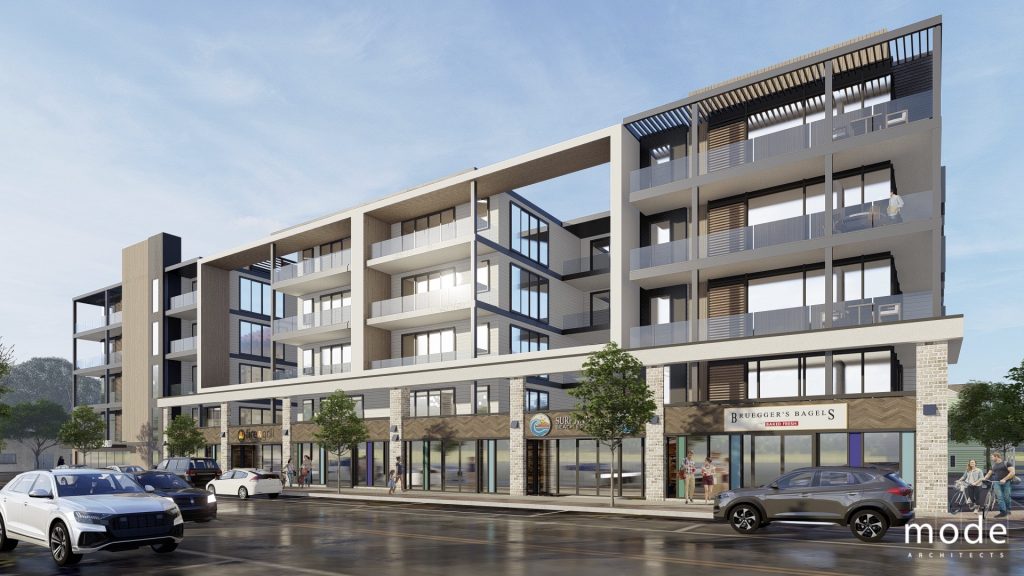
Renderings of the mixed-use complex proposed to replace the Karma nightclub in Seaside Heights. (Courtesy: Mike Loundy/MODE Architects)
A plan to redevelop the infamous Karma nightclub in Seaside Heights will need to “start all over again,” at least legally-speaking, the borough’s planning board attorney said Monday night at a hearing.
A local developer is proposing the demolition of the former nightclub, popularized on MTV’s “Jersey Shore,” and replacing it with a mixed-use complex that will include 37 condominium units, plus ground floor space with three commercial units, each measuring approximately 900 square feet in area. The residential units would measure about 1,400 square feet in area, each.
The first floor of residential space would feature a pool area, gym and sauna for residents on the west side of the structure.
The board began hearing testimony in support of the application Oct. 2, but since then it became known that at least two variances would be required in order to approve the application as written. Since the Karma property is considered a redevelopment area, proposals by the selected redeveloper must match the specifications laid out by the borough. If variances from those specifications are required, they must be public disclosed and published in a print newspaper before the board gains jurisdiction to hear the case.
Steven A. Zabarsky, Seaside Heights’ planning board attorney, said Monday that the board would be unable to pick up the case, and any testimony that was delivered at the Oct. 2 hearing must be set aside now that it has been discovered variances, albeit seemingly minor variances, were found to be required.

Renderings of the mixed-use complex proposed to replace the Karma nightclub in Seaside Heights. (Courtesy: Mike Loundy/MODE Architects)
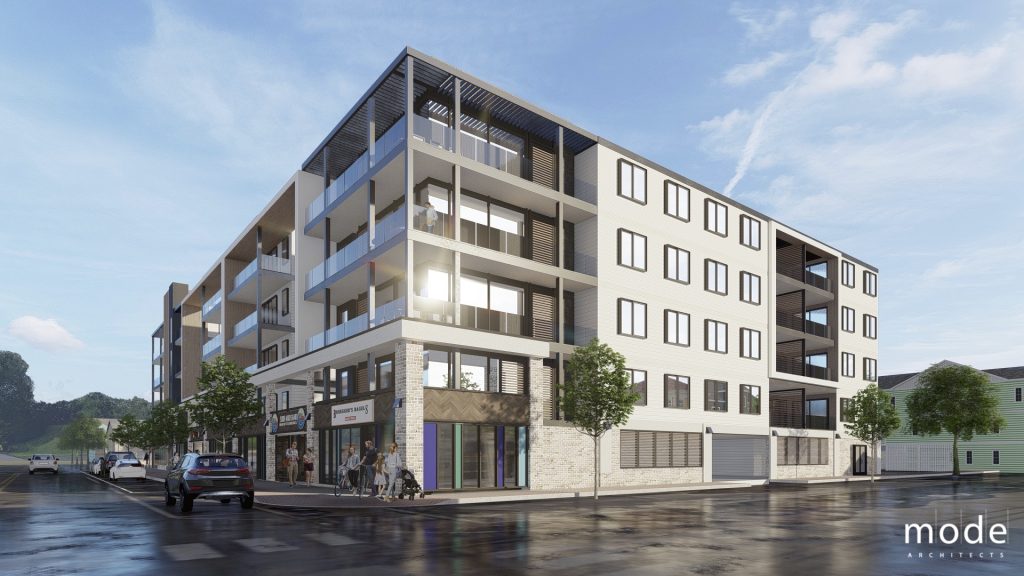
Renderings of the mixed-use complex proposed to replace the Karma nightclub in Seaside Heights. (Courtesy: Mike Loundy/MODE Architects)
A memorandum passed between officials noted the proposed building would stand at 52.5 feet, and a mechanical bulkhead containing an elevator would stand at 64 feet. In the zone in which the building is being developed, and according to the redevelopment agreement, the building is limited to 50-feet in height with an extra 12 feet allowed for mechanicals.
“The application for development listed, in fact, the height of the building at 49 feet, and didn’t have the bulkhead for the mechanicals any higher than 62 [feet],” said Zabarsky.
The two height discrepancies mean the developer would be required to request variances from the board and announce their intention to do so before the case can be heard. Zabarsky said he discussed the matter with his colleague, Matthew Heagen, the attorney representing the redeveloper, and both agreed that a new notice of a hearing should be published.
“Mr. Heagan did send a letter today … and specifically acknowledged what I just placed on the record,” said Zabarsky. “He will need to re-notice completely under the statute and start all over again.”
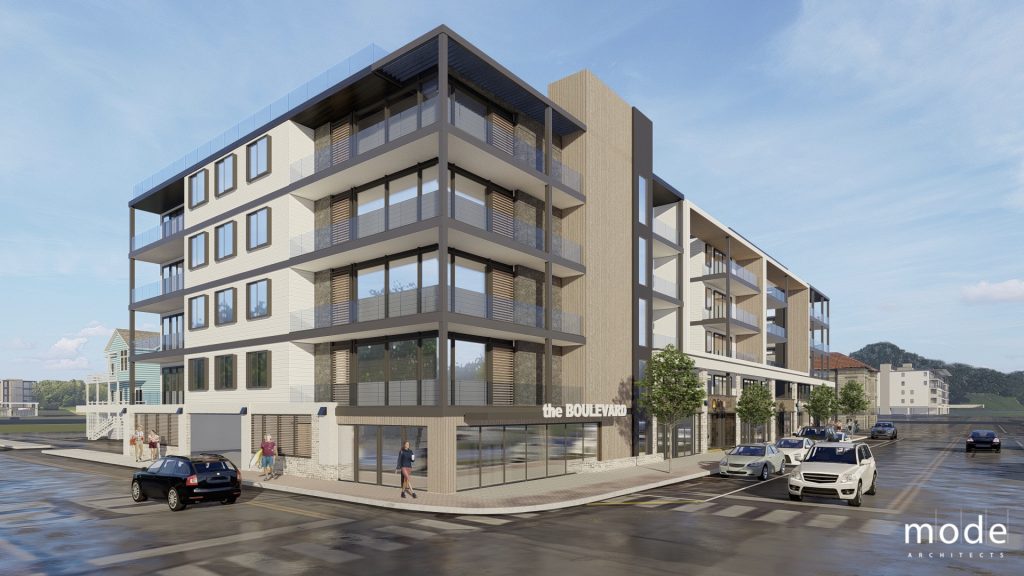
Renderings of the mixed-use complex proposed to replace the Karma nightclub in Seaside Heights. (Courtesy: Mike Loundy/MODE Architects)
While re-starting testimony may seem to represent “red tape” in approving a new development, defects in notification letters or public notices can lead to lawsuits and future delays should another party object to the application.
“If the notice is defective, we don’t even have the jurisdiction or authority to hear the matter,” Zabarsky explained. “I told him you can’t even ask to roll over your testimony because it would not be proper.”
Heagen agreed, Zabarsky said, and the matter is currently rescheduled to be heard at the board’s Nov. 27 meeting, set for the Monday following Thanksgiving weekend. There are already five matters pending that same night, officials said, and it was not clear if the board would be able to hear the entire case in one night.

Advertisement

Ortley Beach & North Beaches
Landmark Ortley Beach Breakfast Spot Looks to Expand

Ortley Beach & North Beaches
‘Temporary’ 70-Foot Cell Tower on Route 35 in Ocean Beach OK’d to Return

Seaside Heights & Seaside Park
Beloved South Seaside Park Restaurant Will Remain Open As Developer Seeks to Demolish Block

Seaside Heights & Seaside Park
In Seaside Heights, A $50M Flagship Building Rises Over the Boulevard in a Famed Location

Police, Fire & Courts
Ocean County Sheriff Establishes Drone Command Center in Seaside Heights Amid New Video


